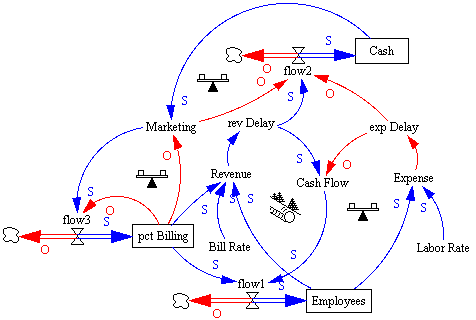- Ayrıntılar
What Systems Theory is Not
The definition of Social Systems theory must not be confused with another theory known as “reductionism” (Koestler, Smithies, 1969 p. 60). Reductionism is a term introduced by Rene Descartes in the 1600’s which, contrary to the systems theory, offers that all things, no matter how complex they are, operate thanks to very basic units. Though the idea of smaller parts forming a complex organism is shared in both theories, reductionism differs from systems theory in that it tends to minimize the complex by focusing on how simple its parts are. (Descartes, 1637)
Systems theory does the opposite: It gives emphasis to the complexity that exists within the elements of a whole and tries to understand the dynamics that occur among such formative elements (Von Bertalanffy, 1964 p. 62)
It is safe to assume that every formative process seems to follow the same pattern of behavior: Individual parts joining together to make a whole part which may, or may not resemble the elements that built it. Yet, what motivates the individual parts to unite? How do the parts of an object interact? How do the changes within the parts affect the changes within the system? Those questions are what bring us to the analysis of four sociologists: Von Bertalaffy, Banathy, and Laszlo.
Ludwig Von Bertalanffy
Von Bertalanffy saw the world through scientific eyes (Brauckmann, 1999). As a scientist, he had already conceived a series of theories that aimed to show a structure and pattern of formation among different things. In 1930 he offered the “Organismic Systems Theory” (Von Bertalanffy, 1960, p. 156). This theory attempted to explain the processes of life as a phenomenon. He insisted that individuals exist because of a combination of different processes that work together in the formation of the organism. He offered that these processes are systemic, yet dynamic, and complex. To illustrate this idea, Von Bertalanffy compared the organism as a machinery out in the open trying to “maintain equilibrium”. This equilibrium symbolized the individual’s struggles to survive and adapt to an environment, but also the internal struggles to adapt and perform that occur within the systems that compose the individual itself (Von Bertalanffy, 1960, p. 158-159).
The Organismic Systems Theory gave life to a myriad of other theories proposed by Von Bertalanffy to explain the processes of unification. However, it was the General Systems Theory (GST) what seemed to encompass his entire model in a transdisciplinary way. The GST is defined as a “metatheory” that arose from the previous postulates by Bertalanffy. (Braukmann, 1999, p. 2)
Devamını oku...










